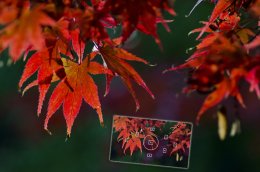
 While it can take years to master the camera techniques you need to take amazing images, whatever your skill level and whatever you choose to shoot, it often pays to keep things simple.
While it can take years to master the camera techniques you need to take amazing images, whatever your skill level and whatever you choose to shoot, it often pays to keep things simple.
To help you along we’ve put together 10 essential camera techniques every photographer should master. We’ll start with taking control of focus then move on to using features like exposure compensation, white balance and more.
From focusing and photo composition to white balance and lighting, this straightforward guide should cement your basic shooting skills, rid you of bad photo habits, and leave you to concentrate on simply getting better images.
So with that in mind, we’ve also included handy examples of common problems and mistakes that can happen to anyone, whatever their experience, and how best to correct them.
But don’t be afraid of making mistakes; it’s how everyone learns a new skill.
SEE MORE: 10 common camera mistakes every photographer makes
Camera Techniques for 2014: 01 Take control of focus
Your chosen subject won’t always be in the centre of the frame, after all.
So the first skill you need to master is how to get your camera to focus on exactly the point that you want to be sharp.
Your camera has a number of focus points spread across the frame – you can see them through the viewfinder – and these offer an excellent solution for focusing on off-centre subjects.
You’ll need to set your camera to its single-point autofocus mode, rather than the multiple or automatic selection.
SEE MORE
Beginner photograph tips: the most common mistakes (and how to avoid them)
Select individually
The exact procedure for selecting individual focus points (and the number available) varies according to your camera, but generally on Canon models you have to press the AF point selection button, then rotate the input dial or use the selector on the rear of the camera.
SEE MORE: Autofocus point options – what subjects should each be used with
Look through the viewfinder as you do so, and you’ll see the active AF point (in red) move around the frame.
On most Nikon SLRs, once you’ve selected single-point autofocus you simply use the four-way controller on the back of the camera to highlight a different AF point.
The main downside to using the outer focus points on many cameras is that they aren’t as sensitive as those in the centre of the frame.
This means that they can struggle to focus in low light, if the subject is low contrast or you are using a lens with a maximum aperture of f/5.6 or narrower.
You may also find that there isn’t a focus point exactly where you want the camera to focus.
SEE MORE
Master your camera’s autofocus – which AF points to use and when to use them
In both cases you can manually focus the lens, or use a technique known as focus lock, where you highlight the subject with the active AF point and then half-press the shutter release to lock the focus distance before reframing the shot.
SEE MORE: The 10 best photography tips for beginners
Get white balance accurate every time
In this next section we’ll take a look at your camera’s white balance settings and how you can get the most accurate colours possible.

You might forget all about setting the right white balance – especially if you shoot in raw, as then you can change it when you process your images later.
However, you’ll need to get the right white balance in-camera to be able to assess the exposure and colours of your shots and achieve the best results.
Strong colours
Your camera’s Automatic White Balance setting generally does a pretty good job of capturing colours correctly in most lighting conditions, but it’s not infallible.
The main situation in which you’ll get better results by using one of the manual preset values is when your subject is dominated by a single colour or tone, such as a blue sky, orange sunset or even a large expanse of green grass.
In these situations Automatic White Balance can set a value to counteract this strong colour, so you will get better results by selecting a white balance setting that suits the lighting conditions, such as Sunlight or Shade.
The actual white balance of the light at sunrise or sunset is close to the Tungsten or Artificial Light setting (3, 200K). But if you set this preset you will lose much of the warmth that you want to capture in your shot.
Instead, try setting the white balance to Daylight, or even Cloudy, to capture the orange glow in all its beauty.
SEE MORE: How to set up a camera for the first time – 11 things you need to do first
Set a custom white balance… in-camera or on the computer
For precise colours, you’ll need to take control and create a ‘custom’ white balance setting for the light you’re shooting in. There are a number of white balance aids available to help you do this – such as the JJC White Balance Lens Cap (£11) – but all you really need is a piece of white or grey card or a sheet white paper!
Once you’ve got that, try these two simple techniques for creating custom settings either in-camera, or when you process your pictures in software.
SEE MORE: What camera should I buy? Pros and cons of each camera type
In software…
Shoot Raw files, and you can adjust the white balance at your leisure in Raw processing software, such as the Adobe Camera Raw plug-in that comes with Photoshop Elements – the options are similar to those on your camera.
You can use sliders to refine the colour balance, and there’s also a White Balance tool; click on a neutral tone in an image with this to set the white balance.
But what if a scene doesn’t contain any neutral tones? The answer is to place a piece of white or grey card in the scene at the shooting stage. It only needs to be in place for one frame, as you can use this to adjust the white balance across all images taken in the same light.
1. Set up a reference card
Place the white or grey card in the same light as the focal point of your picture. Choose a white balance preset on your camera, such as Daylight, and make sure you’re shooting Raw quality files.
2. Open the reference shot
Take a shot with the card in the frame, then remove it and carry on shooting. Later, in Elements, open the card image and click on the card with the White Balance tool. Note the values for Temperature and Tint, then manually enter these for your other Raw files taken under the same light.
3. Camera Raw in CS
The Photoshop CS version of Adobe Camera Raw features Select All and Synchronise buttons. These enable you to set the white balance for a series of images.
4. Select and synchronise
Select all the shots taken in the same light as the ‘card’ shot, then click on the white card and watch the magic happen! Alternatively, you can click Synchronise to synchronise WB and other selected settings.
SEE MORE
Alternative whites – 5 ways to get accurate colours when you don’t have a grey card
How to set a custom white balance in camera…
Setting a custom white balance in-camera will save you time at the processing stage. Again, start with a white or grey card in the same light as your scene or main subject. We used a Canon camera for the purposes of this tutorial, but the process is similar with other cameras.
1. Take a shot of the card – it needs to fill the central area of the frame. Use any WB setting.
YOU MIGHT ALSO LIKE










